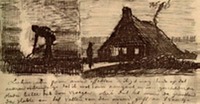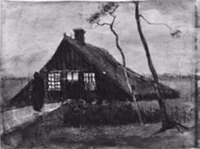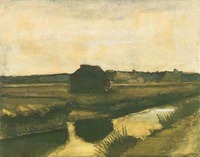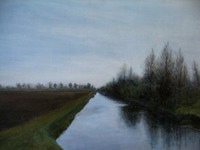vincent van gogh peasant burning weeds 1883

Anyone who has wandered through the moors near Blacklake in late autumn knows that the beauty of the area also has a harsh, merciless quality. Without doubt Vincent van Gogh must have felt that quality in november 1883. Nature around him must have reinforced the extreme loneliness he felt and which he called a torture in one of his last letters from New Amsterdam. As a romanticist Vincent van Gogh felt much compassion for the poor people around him but to them he remained a complete outsider. The local population did not view their environment as a painting of Michel but as a place where fate had brought them to work hard for a living. In their eyes Vincent van Gogh was a very eccentric man, who did not fit in their community. A few days before his departure he wrote about it to his brother Theo: " I say loneliness and not even in peace — but that loneliness which a painter in an isolated region encounters when every Tom, Dick and Harry takes him to be a madman — a murderer — a vagabond &c. &c. Granted it may be a petty vexation, but a vexation it is. Being a stranger, doubly strange and unpleasant — however stimulating and beautiful the countryside may be. ...... We’re now at a point where I say: at present I cannot go on."
On December 4, 1883 Vincent left Drenthe and returned as a lost son to his parents in Nuenen. He explained his sudden departure to brother Theo :" I thought that being at home again might give me a more accurate insight into the question of what I should do. Drenthe is superb, but staying there depends on many things — depends on whether one has the money for it, depends on whether one can endure the loneliness. Although he intended to return he never saw Drenthe again. In his lodge in New Amsterdam he had left some belongings including many drawings.The owner of the lodge gave some of his drawings to his relatives as birthday present. But none of them liked the "strange" drawings. In 1904 the new owner of the lodge cleaned up the remainder of his drawings and burned them in a stove.




